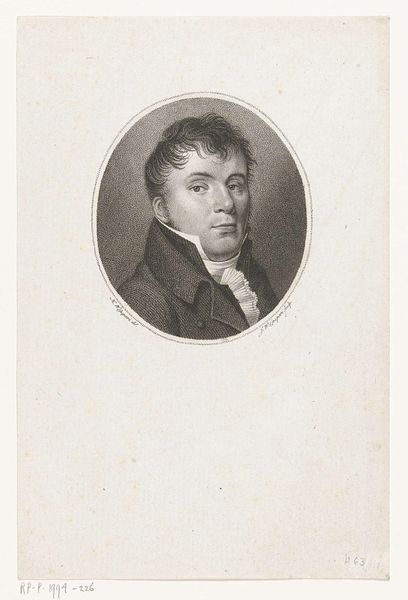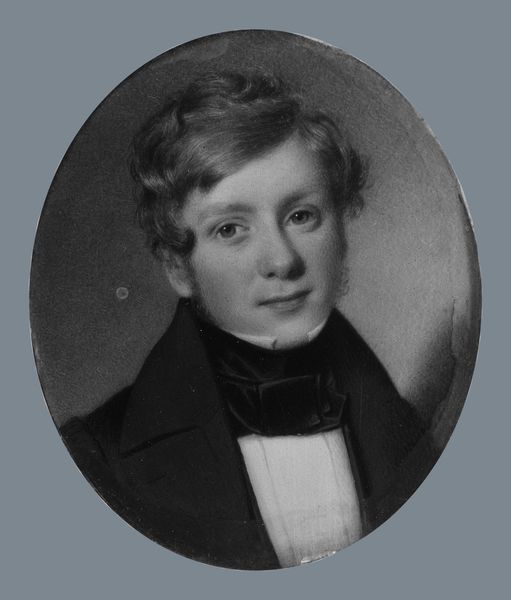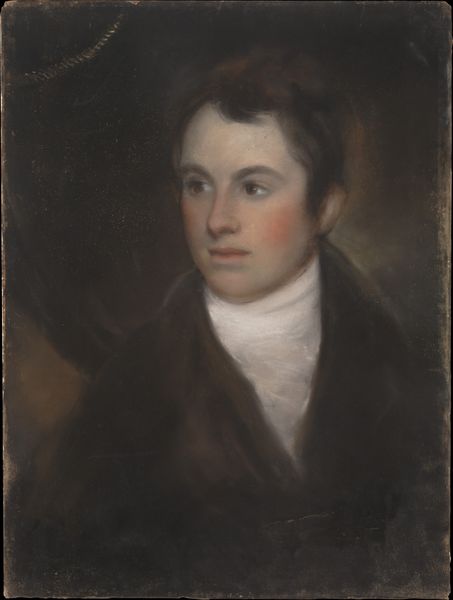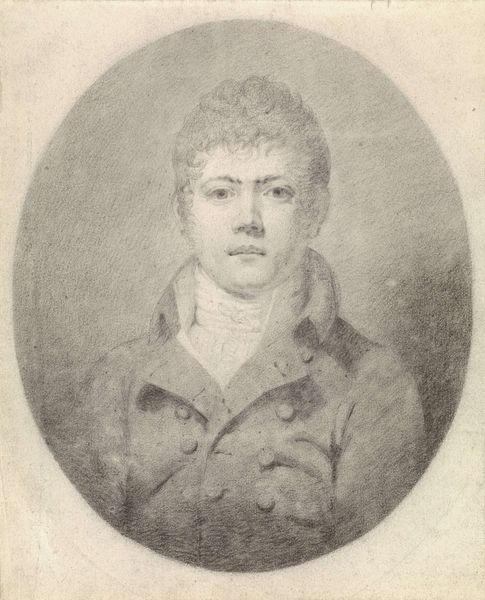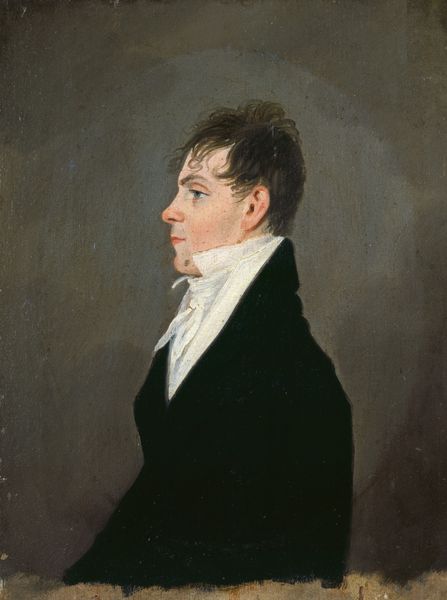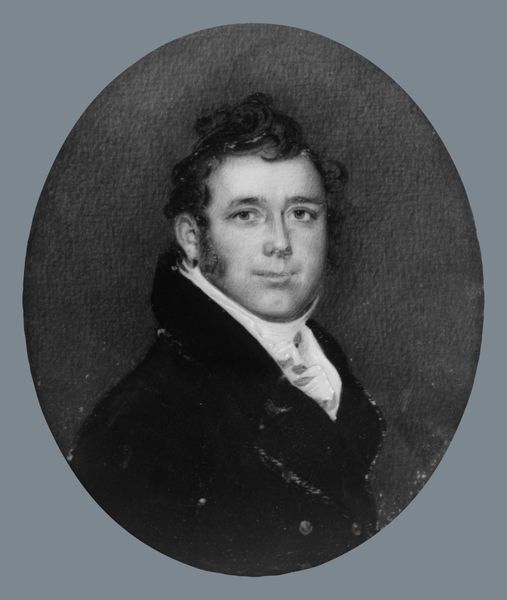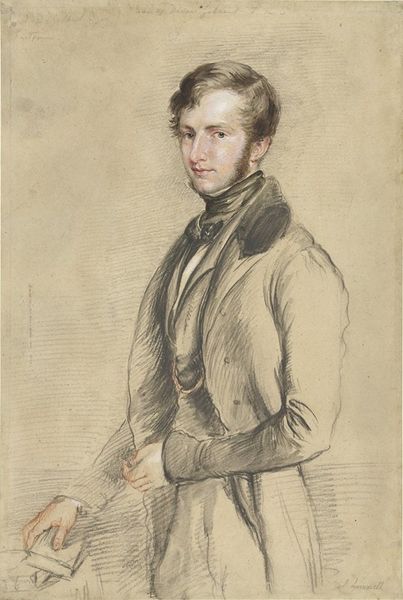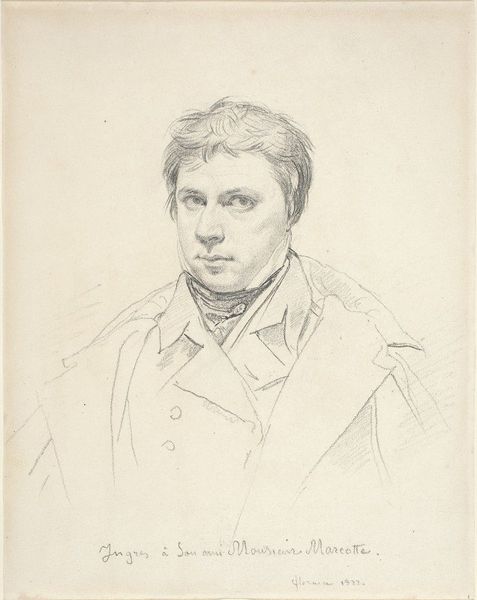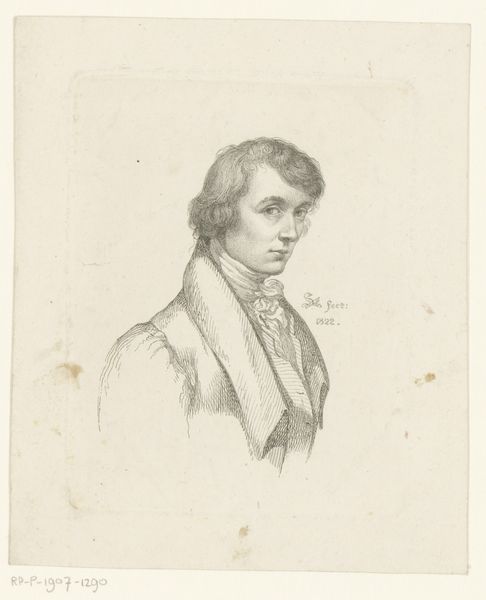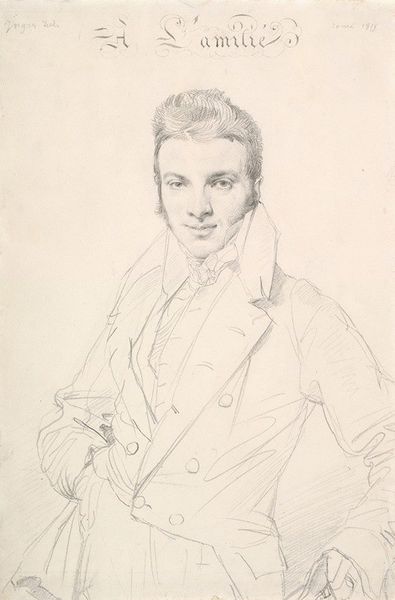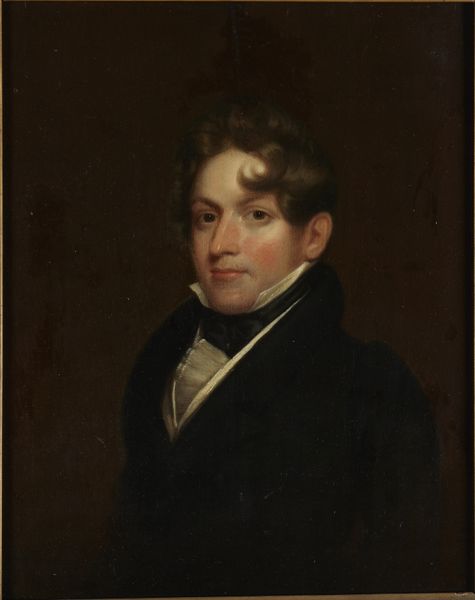
drawing, pencil, graphite, ivory
#
portrait
#
drawing
#
neoclacissism
#
portrait
#
romanticism
#
pencil
#
graphite
#
portrait drawing
#
ivory
Dimensions: 10.9 cm (height) x 8.8 cm (width) (Netto)
Editor: This is "L.H. Roos ?," a portrait drawing from between 1790 and 1844 by Heinrich Jacob Aldenrath. It’s rendered in graphite and pencil on ivory. I'm struck by the sitter’s gaze – it feels both direct and a little melancholic. How do you read this piece? Curator: I think it's interesting to consider this portrait within the social context of the late 18th and early 19th centuries. These portrait miniatures, often rendered in graphite, pencil, and sometimes even watercolor on ivory, became highly sought after by the European middle and upper classes, and served a symbolic function that allowed family and friends to be together while apart. Given this backdrop, how might the subject’s gaze and attire function as an expression of individual or group identity? Editor: That’s a great point – a symbol of status and connection. But it also seems quite… contained. Is it fair to see it as reflecting the limited roles available to the sitter within a rigid social hierarchy? Curator: Absolutely. We can use post-structuralist lenses to understand how individuals were products of specific historical power dynamics. In the historical context of the piece, these highly stylized portraits become records of an individual who attempts to claim a stable identity as constructed within and against such systems. Do you see any visual cues that contribute to such readings? Editor: The neatly arranged hair and precisely tied cravat suggest an attempt to control appearance and to fit within a certain mold of presentation. But his eyes, his gaze defy that to some degree, yes? Curator: Precisely. We can see how portraiture can perpetuate hegemonic ideologies while simultaneously, perhaps unintentionally, revealing sites of internal tension and contradiction. Editor: This has made me rethink my initial response. It's not just a portrait; it’s a complex negotiation of self within societal constraints. Curator: Indeed. Art allows us to understand people of the past through a critical and intersectional lens, reflecting not just their status but also the social forces acting upon them.
Comments
No comments
Be the first to comment and join the conversation on the ultimate creative platform.


